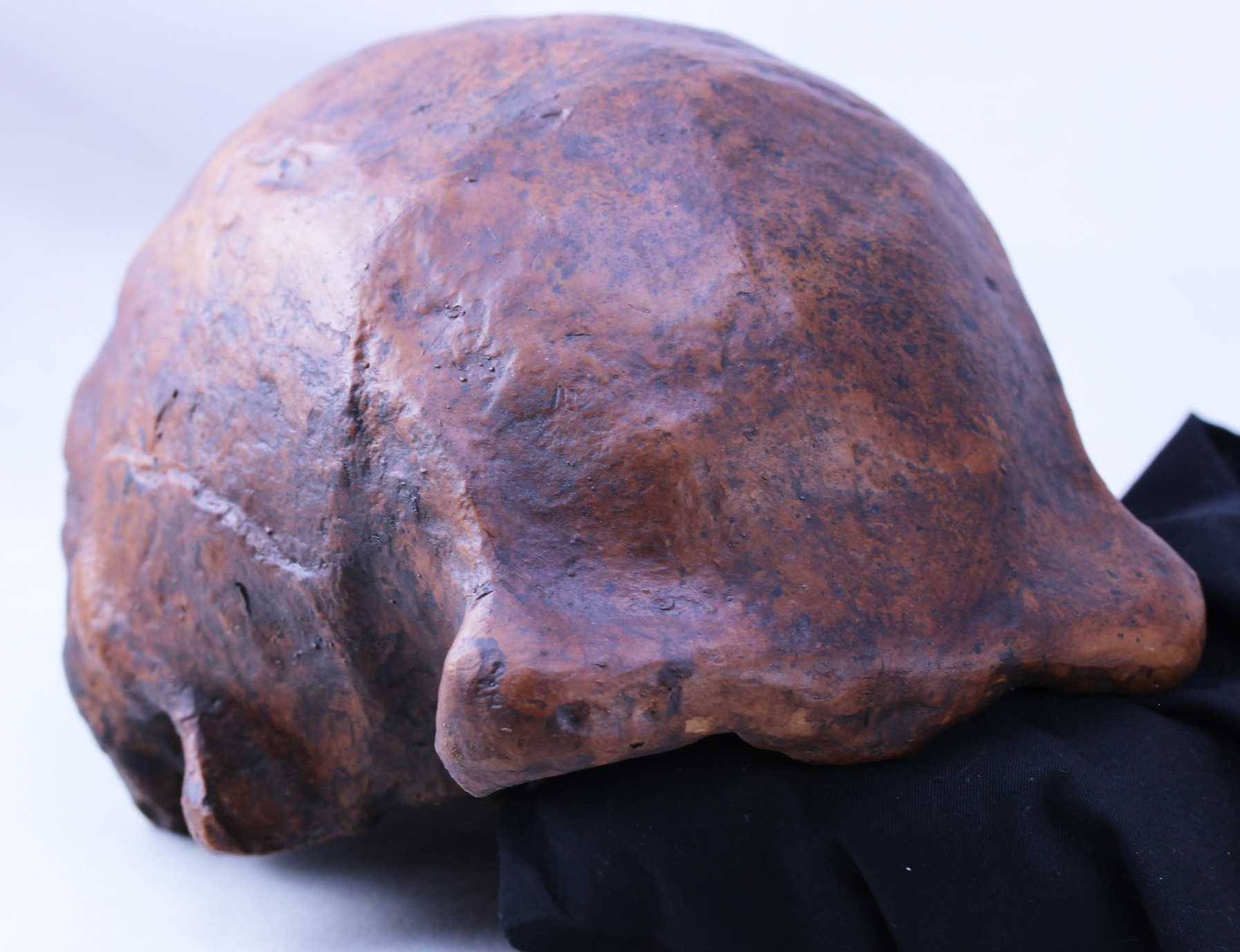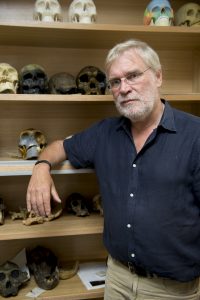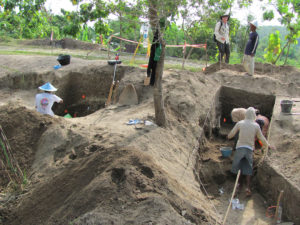
Debate surrounding the last known appearance of one of modern humans’ direct ancestors has been quelled by a suite of new dating analyses co-conducted by a Griffith University archaeologist.
Professor Rainer Grün, Director of Griffith’s Australian Research Centre for Human Evolution (ARCHE), played a key role in the international research team that pinpointed the first comprehensive age for the last known occurrence of Homo erectus globally, in central Java, Indonesia.

The findings suggest the bonebed at the site of Ngandong containing the Homo erectus fossils was laid between 117,000-108,000 years ago.
The study, published in Nature, was co-led by Dr Yan Rizal from the Institute of Technology Bandung, Indonesia and Professor Kira Westaway from Macquarie University in New South Wales.
Professor Grün and the team performed a series of dating techniques to timestamp animal fossils from the river terraces above and below the site where 12 Homo erectus skull caps and two tibia had been found, then dated the surrounding land forms.
These 52 new age estimates for the Ngandong evidence 90 years after they were first discovered establish an accurate account of primeval humans’ possible last stand on Earth.
Professor Grün carried out an initial U-series dating study on bones. While these estimates are generally regarded as minimum ages, they were corroborated with independent dating results from luminescence and ESR.
After Homo erectus dispersed from Africa about two million years ago, it colonised the ancient world, which included Asia and possibly Europe.
But about 400,000 years ago, Homo erectus essentially vanished. The lone exception was Ngandong, on the Indonesian island of Java. But scientists have been unable to agree on a precise time period for the site until now.
The researchers also determined when the mountains to south of Ngandong first rose by dating stalagmites from caves in the Southern Mountain, which determined when the Solo River began coursing through the Ngandong site, and the river terrace sequence was created.
The new age range for Ngandong places the site into a framework for human evolution in Southeast Asia. The Ngandong Homo erectus existed at around the same time as Homo floresiensis (‘Hobbits’) in Indonesia and the newly discovered Homo luzonensis in the Philippines, both of which have some Homo erectus-like features.

At this age, Homo erectus could potentially have met other human species such as the enigmatic Denisovans, first discovered in the cold caves of Russia.
“Or perhaps more provocative: are the elusive Denisovans actually Homo erectus?” poses Professor Grün.
Researchers from multiple institutions contributed to the manuscript, including those from the Institute of Technology, in Bandung, Indonesia; the University of Wollongong, Australia; the University of Texas-Austin; Southern Cross University, in Lismore, Australia; the University of Oxford, United Kingdom; the Geological Agency, in Bandung; the University of Queensland, in Brisbane Australia; the University of New England, in Armidale, Australia; the University of Copenhagen, in Denmark; Minnesota State University-Mankato; Bluestone Heights, in Cleveland, Ohio; the University of Alberta, in Edmonton, Canada; Rutgers University; Indiana University; and Illinois State University.
The research was supported by Australian Research Council grants, Wenner-Gren Foundation for Anthropological Research, University of Iowa and Macquarie University
The study ‘Last appearance of Homo erectus at Ngandong, Java, 117,000-108,000 years ago’ has been published in Nature.








